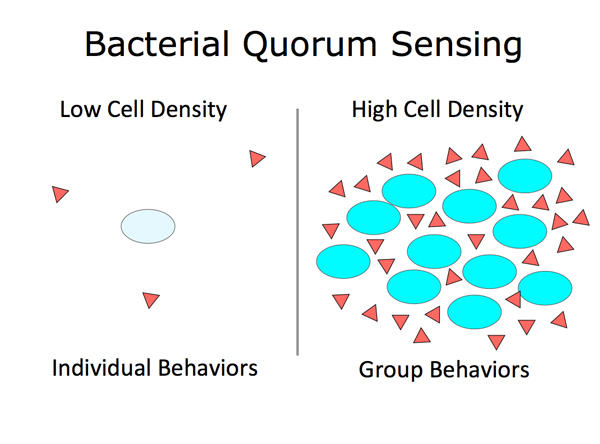
Overview
Quorum sensing is a bacterial communication process that relies on the production, detection, and group-wide response to extracellular signal molecules called autoinducers. Quorum sensing enables bacteria to synchronously alter behavior in response to changes in population density and species composition of the vicinal community. My group’s quorum-sensing investigations combine genetics, biochemistry, structural biology, chemistry, engineering, and modeling. This comprehensive approach is leading to an understanding of intra- and inter-species communication, self versus non-self recognition, network design features for high-fidelity information transfer, and principles underlying population-level cooperation. Moreover, bacterial pathogens require quorum sensing for infection. An important practical aspect of our investigations is the development of anti-quorum-sensing therapies as alternatives to traditional antibiotics.
The overriding questions we are pursuing are: Why do bacteria communicate? What does it cost them; what do they gain? How do bacteria integrate and interpret the information contained in blends of signal molecules? How do populations of quorum-sensing bacteria combat eavesdropping and cheating? Can we identify pro- and anti-quorum-sensing molecules to manipulate quorum sensing on demand?

